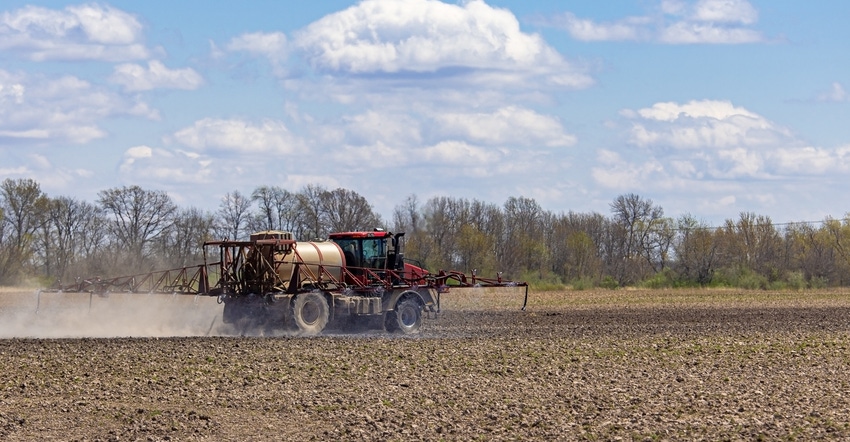May 5, 2021

There’s a lot that goes into burndown herbicide application decisions each spring before planting. Rarely do Kansas farmers have to consider a multiday freeze event at the end of April, though.
The April 20 to 22 cold snap caused farmers to pause their spring planting preparations, including burndown applications, says Sarah Lancaster, Kansas State University Extension weed management specialist. In the April 22 K-State Agronomy eUpdate, she tells farmers that herbicides only work on actively growing plants; and depending on the weed’s growth stage and the temperatures in their particular fields, their herbicide applications may or may not have been effective.
Weed response to cold
Weeds have developed to survive in harsh conditions and thrive in ideal conditions. That makes them inherently difficult to control in production situations. For example, even in times of drought that affect commodity crops, weeds find a way to grow and thrive.
In general, weeds grow best with temperatures above 60 degrees F, Lancaster says.
“Even a cool-season plant like marestail grows better at 75 degrees F than at 65 degrees F,” she says. But, even three days of temperatures hovering at or below freezing weren’t enough to kill many weeds — it just may have slowed their growth or stopped it until conditions improved.
Weeds have developed survivor characteristics to help them withstand stressors, too. The weed’s growth habit, leaf hairs, even its genetic herbicide tolerance — are all defenses against herbicide applications.
Type of herbicide
Lancaster says farmers need to adjust their scouting and responses, depending if they’re applying a systemic, like glyphosate or 2,4-D; or a contact herbicide, like paraquat, for burndown.
Glyphosate and 2,4-D are both systemic, phloem-mobile herbicides, and they must move through the plant along with the sugars that have been produced through photosynthesis, she explains. Glyphosate translocation is at its peak four days after application, because it takes that much time to move through the plant.
However, if the plant slowed down photosynthesis because of cold, or some other environmental stress, that herbicide doesn’t have a chance to move through the plant as quickly.
“This means anything that slows down photosynthesis within four days of application is likely to reduce the effectiveness of the herbicide,” Lancaster says.
Contact herbicides, like paraquat, aren’t translocated through the plant; therefore, their effectiveness may be less affected by cold temperatures. But the plant still must be actively growing for maximum control.
Scouting fields
For those farmers who applied pre-emergence herbicides to their corn, Lancaster says they should scout those fields to check for crop injury after the cold.
“If you applied preemergence herbicides to corn, be aware that corn stressed by cold soil will not metabolize herbicides well,” she says. “Applications of Group 15 herbicides, such as S-metolachlor; Group 27 herbicides, like mesotrione; and other types of herbicides may result in crop injury during extended periods with cold, wet soil conditions.” Farmers should look for corn curling or bleaching from herbicide damage.
In general, Lancaster recommends waiting for warmer weather to apply herbicides. But those who already applied their burndowns and are scouting fields for effectiveness may need to talk to a crop consultant, their local Extension agent or sales representative for options.
And in the future, if farmers must get in the field when the temperatures are cooler, they may want to consider increasing herbicide rates to the maximum allowed by the label, she says. They should also use adjuvants that otherwise might be optional if they were applying the products under normal temperature conditions.
Source: The Kansas State University Department of Agronomy, which is solely responsible for the information provided and is wholly owned by the source. Informa Business Media and all its subsidiaries are not responsible for any of the content contained in this information asset.
You May Also Like




